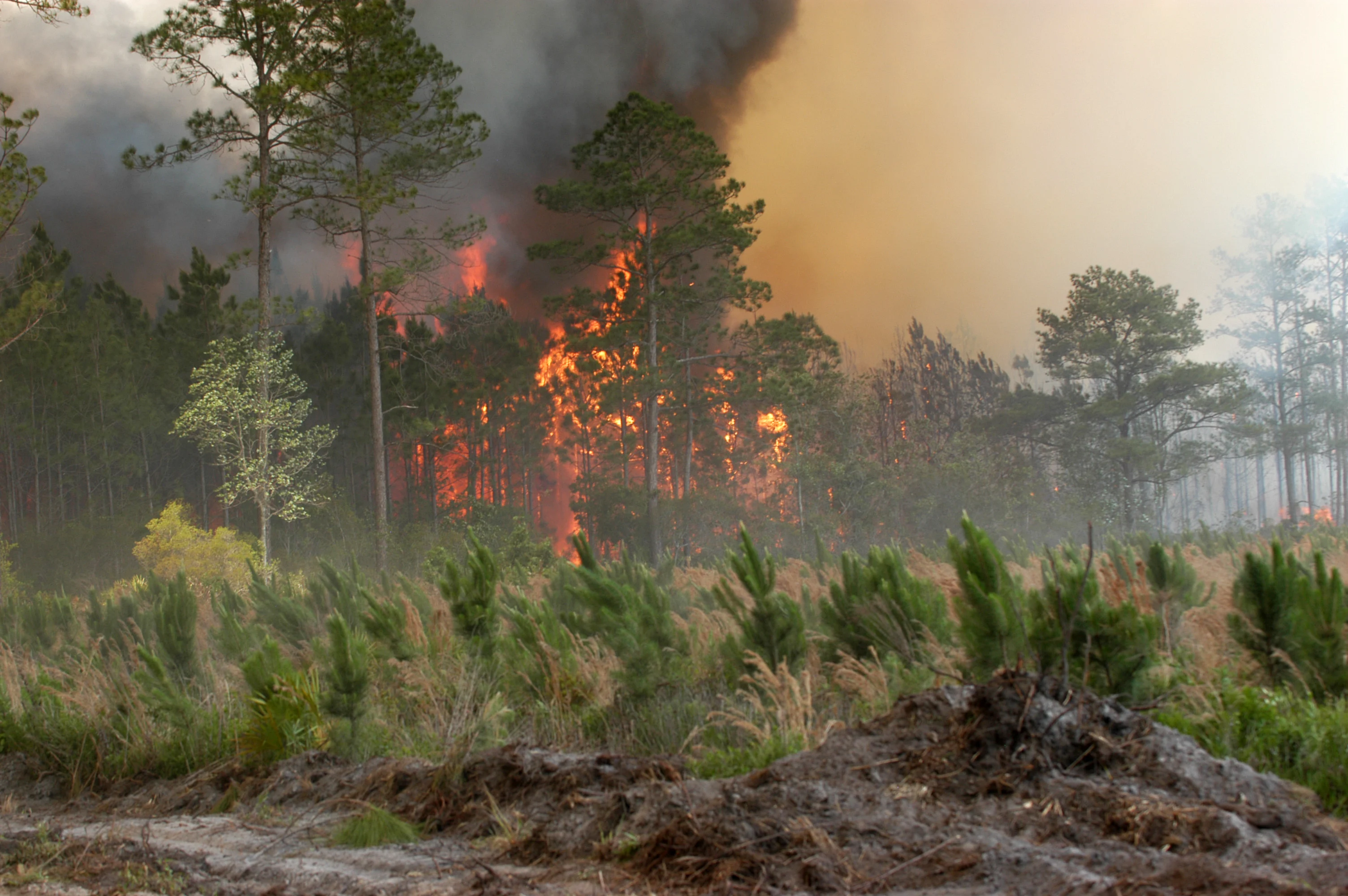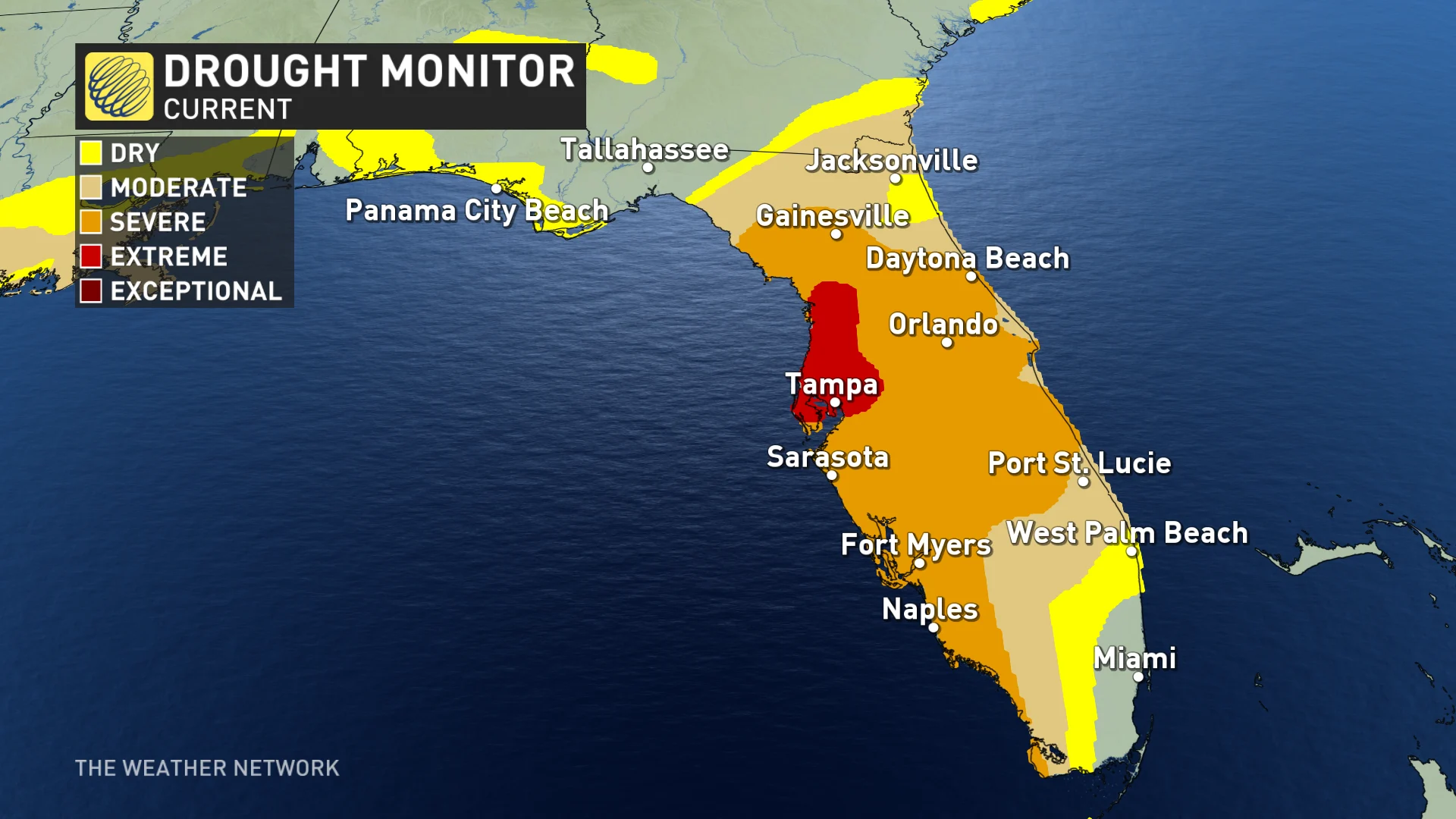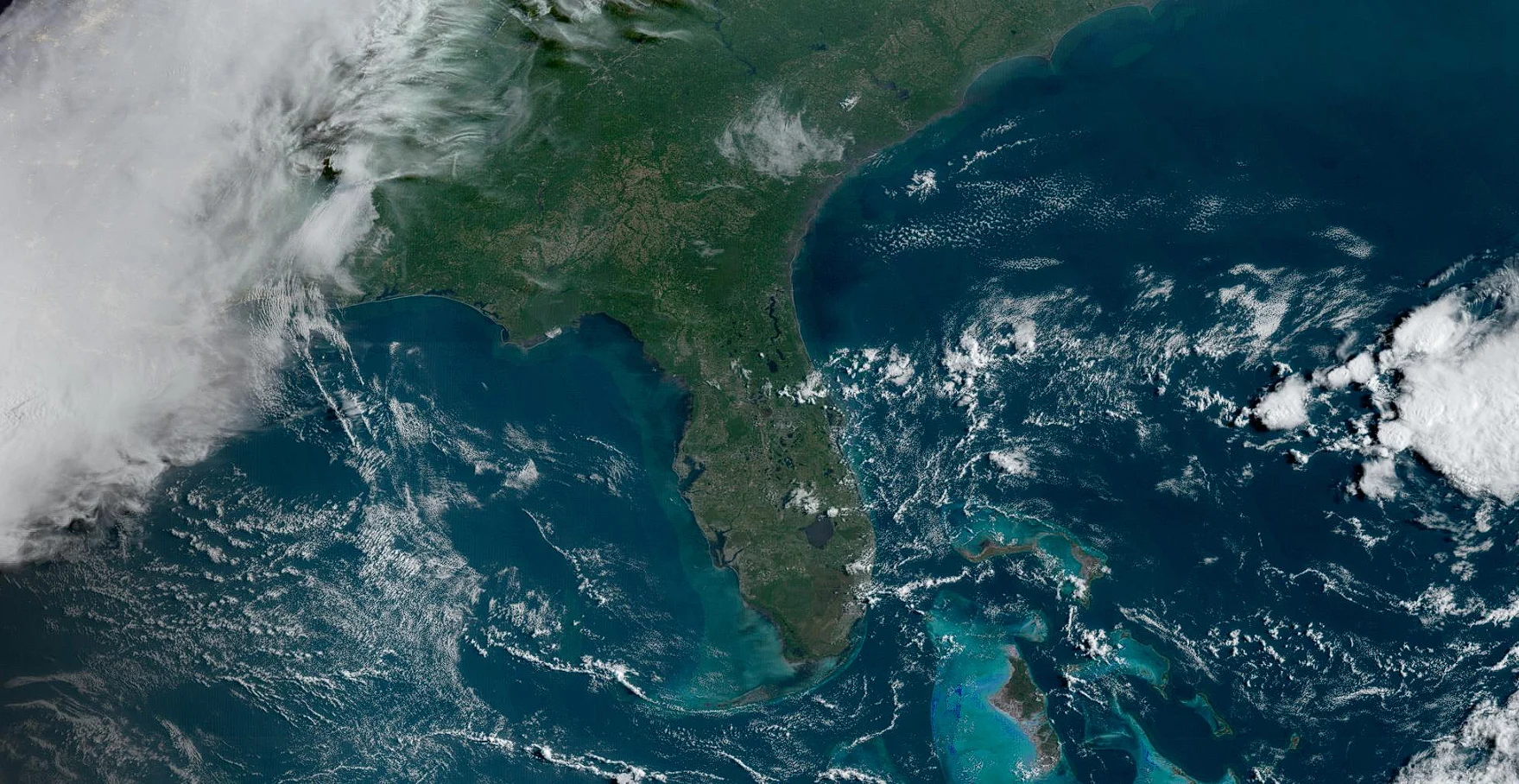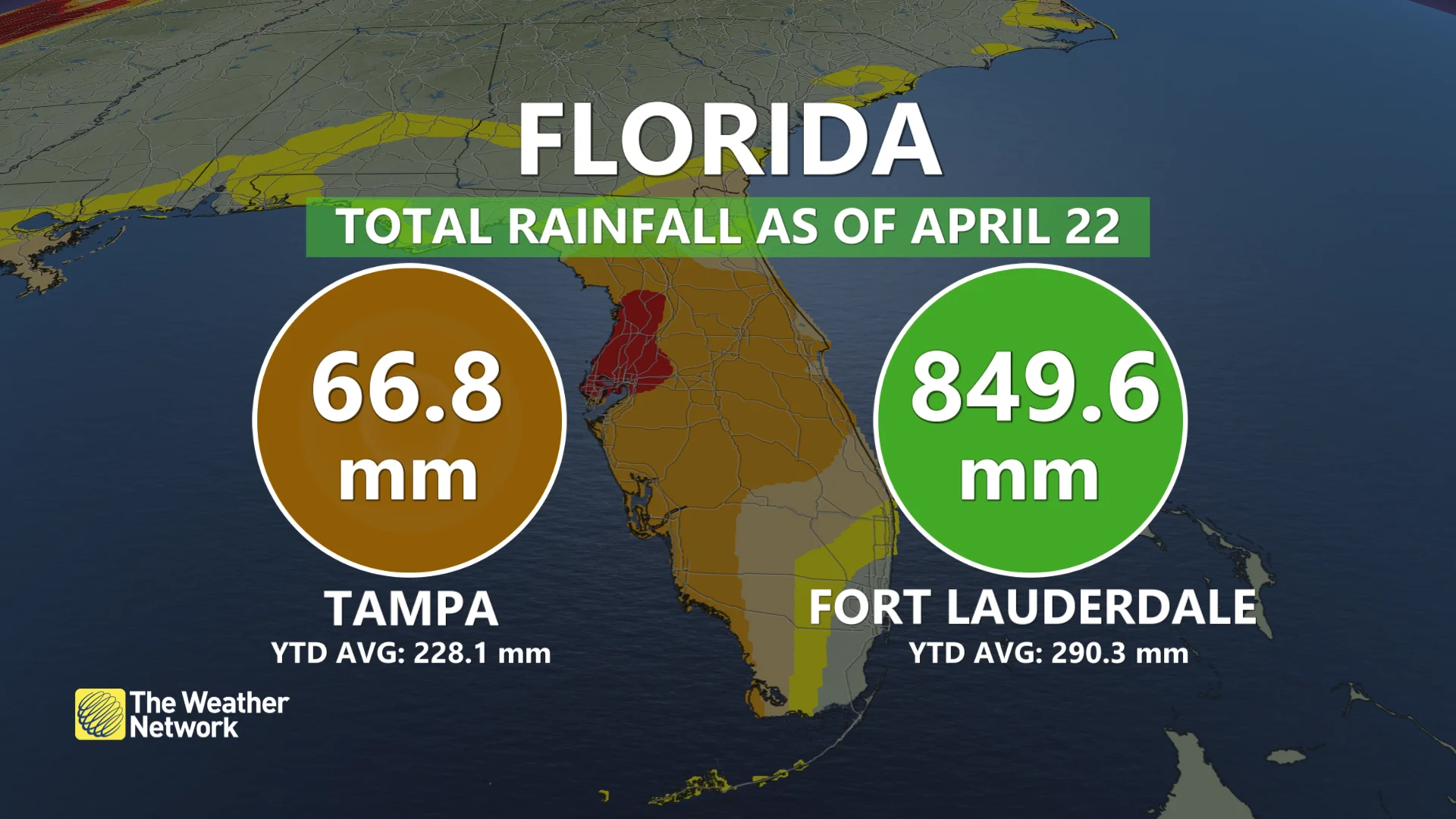
Heads up, travellers: Florida’s severe drought raises fire worries
Nearly half of Florida is experiencing a ‘severe’ or ‘extreme’ drought, leading to burn bans across some of the state’s most popular tourist spots.
Mind your sparks and stay alert if you’re heading to Florida any time soon.
The Sunshine State has been a battleground between atmospheric extremes in recent days, with intense flooding in Fort Lauderdale contrasting with a worsening drought just a short drive away. Burn bans are in effect for a large portion of the state amid the ongoing drought.
DON’T MISS: 8,000-km carpet of seaweed heads toward southern U.S. beaches
An unusually dry pattern over the past couple of months sent two-thirds of Florida into some level of drought, with nearly half the state experiencing a ‘severe’ or ‘extreme’ drought this past week, according to the latest analysis from the United States Drought Monitor (USDM).

It’s an odd dry spell for a part of the United States that’s accustomed to year-round drenchings.
A swath of land north of Tampa slipped into an ‘extreme’ drought this past week, accenting the dire need for rain along the peninsula’s midsection.
Tampa’s year-to-date rainfall adds up to about 228 mm by April 22 under normal conditions. The city’s airport has only seen 66.8 mm so far this year—less than one-third of their normal rainfall by the middle of April.
The drought is even apparent on visible satellite imagery these days, with the muted browns of dead and thirsty vegetation spreading across parts of Florida parched for precipitation.

Burn bans cover 17 counties across the state in response to the extreme dryness. The effort to prevent the spark and spread of wildfires grows more serious with each day of warm sunshine and minimal rainfall. The bans include the Orlando-Kissimmee area, as well as Naples and Fort Myers down on the southwestern coast.
Crews have already fought several wildfires throughout the state, including a brush fire near Naples. That fire in rural Collier County consumed more than 2,500 hectares of land earlier this month, according to a report from local television news station WINK.
Florida is a popular destination for Canadians heading south in search of luxurious warmth this time of year.
Visitors and residents alike have to take special care not to spark any wildfires amid the state’s severe drought.
Bonfires and campfires are a significant risk and may be prohibited in areas where burn bans are in effect. Carelessly discarded cigarettes are a common cause for brush fires that quickly grow out of control, as is driving or parking on grass where the heat of vehicles may ignite dry vegetation below.

WATCH: 'Life threatening' flash floods cause chaos at Fort Lauderdale-Hollywood Airport
It’s a completely different story just a short drive away. Extremes beget extremes, and while many Floridians hope for bountiful rains, there are plenty of folks in the southeastern corner of the state welcoming any opportunity to dry out.
RELATED: Major flooding hits South Florida, inundates Fort Lauderdale
Fort Lauderdale recently experienced a historic rainfall event after powerful thunderstorms stalled over the bustling city north of Miami. Driving rains fell hard and fast across the area during the afternoon and evening hours on April 12, with rainfall rates climbing higher than 75 mm per hour at times.
Fort Lauderdale International Airport recorded upwards of 650 mm of rain in a single day during that storm, a deluge that stranded travellers as overwhelmed drainage systems flooded many of the airport’s tarmacs and runways. Extensive flooding occurred throughout the city as a result of the extreme rainfall.
Thumbnail image of a fire in the Okefenokee Swamp in May 2007 courtesy of FEMA/Wikimedia Commons.










